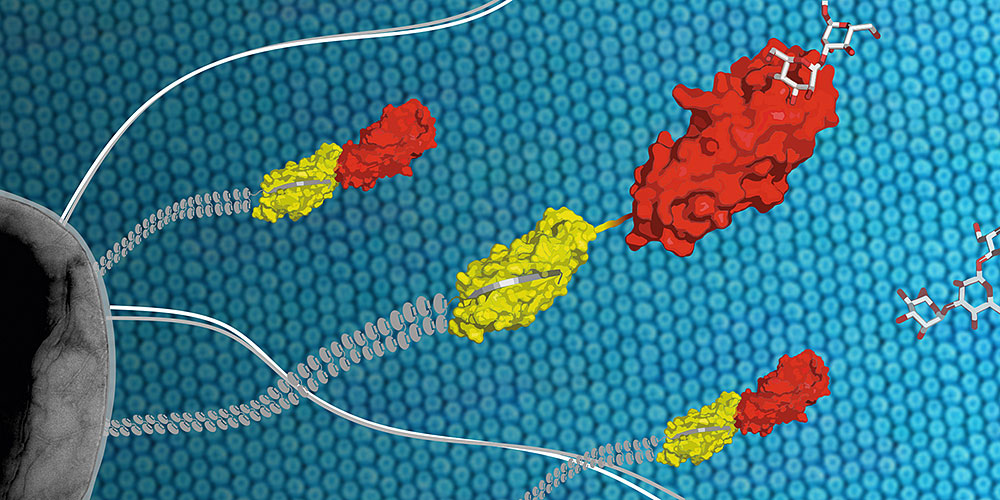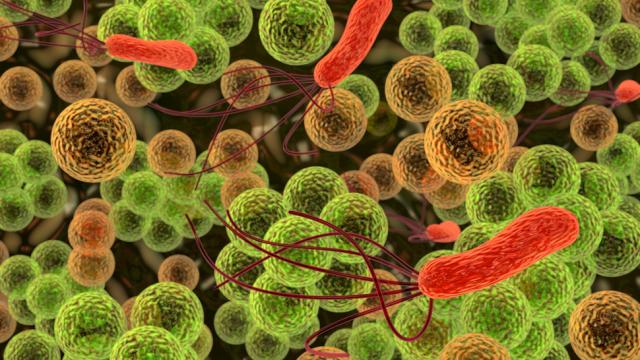Urinary tract infections are typically caused by a bacterium that somehow manages to creep its way into the bladder, despite the intense pressures exerted by urination. It turns out these microbes use hooks to cling on in desperation while we pee.
As anyone who has ever had a UTI knows, such infections are supremely uncomfortable. They are caused by the intestinal bacterium Escherichia coli, which makes its way from from the urethra to the bladder. Nearly one in every two women will experience a UTI at some point during her life, but men can get them too (though less frequently).
Scientists have wondered how these microbes are capable of withstanding urinary flow, but new research from the University of Babel and ETH Zurich shows these tiny critters have evolved a rather clever trick in the form of built-in grappling hooks. The details can now be found in Nature.

Using the protein FimH (yellow/red) located at the tip of long protrusions, the bacterial pathogen E. coli (grey) attaches to cell surfaces of the urinary tract. Image: Maximilian Sauer, ETH Zürich).
Researchers Timm Maier and Rudolf Glockshube have learned that E. coli adheres to the urinary tract during urine flow using a hair-like protein called FimH. This protein deploys a catch-bond mechanism that allows it to stick to sugar structures on the surface of a cell. The more it’s pulled, the more tightly it binds to the surface. Once urination stops, the microbes release their tight grip, enabling them to continue their journey towards the bladder.
“The protein FimH is composed of two parts, of which the second non-sugar binding part regulates how tightly the first part binds to the sugar molecule,” explained Maier in a press release. “When the force of the urine stream pulls apart the two protein domains, the sugar binding site snaps shut. However, when the tensile force subsides, the binding pocket reopens. Now the bacteria can detach and swim upstream to the urethra.”
The discovery of this protein could lead to new UTI treatments that don’t require antibiotics. In future, targeted drugs could be used to prevent the bacteria from using FimH to attach itself to the urinary tract. Such treatments would go a long way to staving off the antibiotics apocalypse.
[Nature via New Scientist]
Top Image: Knorre/Shutterstock
